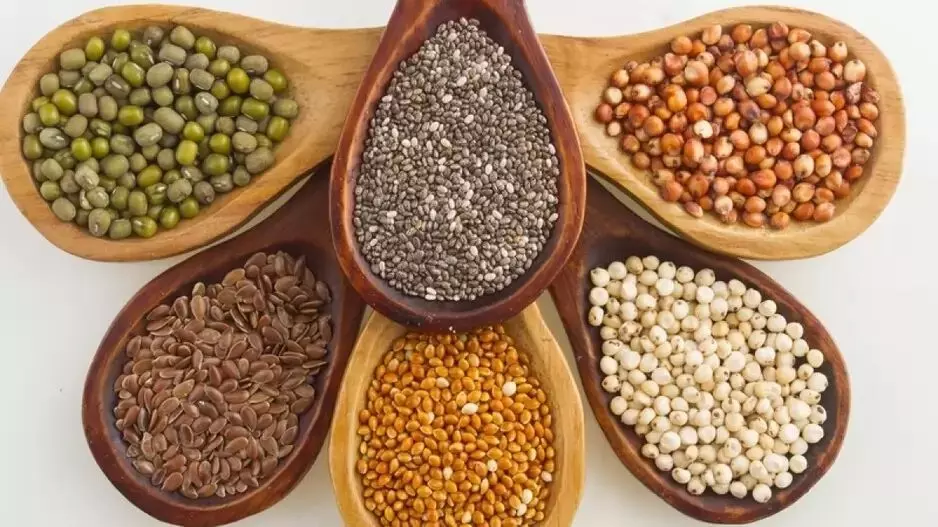How millets-rich diet can help control blood sugar levels in diabetics
With their exceptional nutritional profile, millets are gaining popularity as a dietary choice for managing diabetes
By Anoushka Caroline Williams
Hyderabad: Millets, popularly discussed as ancient superfoods, have been shown to help manage high blood sugar levels, making them a beneficial addition to a diabetic diet. These small-seeded grains have been a dietary staple in Asia and Africa for thousands of years. With their exceptional nutritional profile, millets are gaining popularity as a dietary choice for managing diabetes.
Why millets are good for diabetes
Low Glycemic Index: Hyderabad-based nutritionist Dr Anjali Rao said that, “Millets are beneficial for diabetes management due to their low glycemic index (GI). Foods with a low GI release glucose slowly into the bloodstream, helping to prevent spikes in blood sugar levels. Varieties such as pearl millet, foxtail millet, and finger millet have low to moderate GI scores, making them suitable for people with diabetes.”
High Fibre Content: Rich in dietary fibre, millets slow down the absorption of sugar and carbohydrates, preventing rapid spikes in blood glucose levels after meals.
“Fibre also promotes satiety, aiding in weight management, essential for diabetes control. Including fibre-rich foods like millets can significantly impact blood sugar management,” said Dr Sameer Ahmed, a diabetologist from Apollo Sugar Diabetes Clinic.
Nutrient Dense: Millets are packed with essential nutrients, including vitamins, minerals, and antioxidants, despite being low in calories.
“Magnesium, abundant in millets, has been linked to improved insulin sensitivity and glucose regulation. Magnesium in millets supports better insulin function,” explained Dr Ahmed.
Gluten-Free Option: Many millets are naturally gluten-free, suitable for individuals with celiac disease or gluten sensitivity. Gluten-free diets may help improve glycemic control and reduce inflammation.
Versatility in Cooking: Millets can be used in various dishes, from breakfast porridges to main courses, allowing individuals with diabetes to enjoy a varied and flavourful diet while maintaining blood sugar control.
Types of millets for diabetes management
Barnyard Millet: Barnyard millet, also known as Kuthiraivali, is gluten-free and has a low glycemic index. It is versatile and can be used in rice-like dishes, porridges, or baked goods. Its nutty flavour makes it a favourite among health-conscious individuals.
Kodo Millet: Kodo millet, or Kodra, is another nutritious variety with a low glycemic index. It cooks quickly and is ideal for pilafs, salads, or as a rice substitute. Kodo millet is drought-resistant, requiring minimal water to grow, making it environmentally friendly.
Foxtail Millet: Foxtail millet, or Thinai, is a staple in many parts of India. It is highly recommended for diabetes management due to its low glycemic index. It can be cooked like rice or used in porridge, upma, or idlis and dosas.
Finger Millet (Ragi): Finger millet, or Ragi, is renowned for its nutritional profile, particularly its high calcium and iron content. It has a low glycemic index and can be used to make rotis, dosas, or pancakes. Ragi is also used to make a fermented drink called ‘ragi malt,’ believed to have cooling properties.
Jowar Millet: Jowar, or Sorghum, is widely cultivated in India and is gluten-free. It is used to make rotis, bhakris, or pancakes. Jowar is also a staple in Africa, used in traditional beverages like ‘kunu’ or ‘sorghum beer.’
Pearl Millet: Pearl millet, or Bajra, is known for its nutritional benefits and culinary versatility. It is used to make traditional Indian bread called ‘bhakri.’ Pearl millet can withstand dry and arid conditions, making it an important food source in semi-arid regions.
“Incorporating millets into daily meals can help stabilise blood sugar levels and promote overall well-being. Millets are not just a dietary choice but a step towards a healthier life for those managing diabetes,” said Dr Anjali Rao.